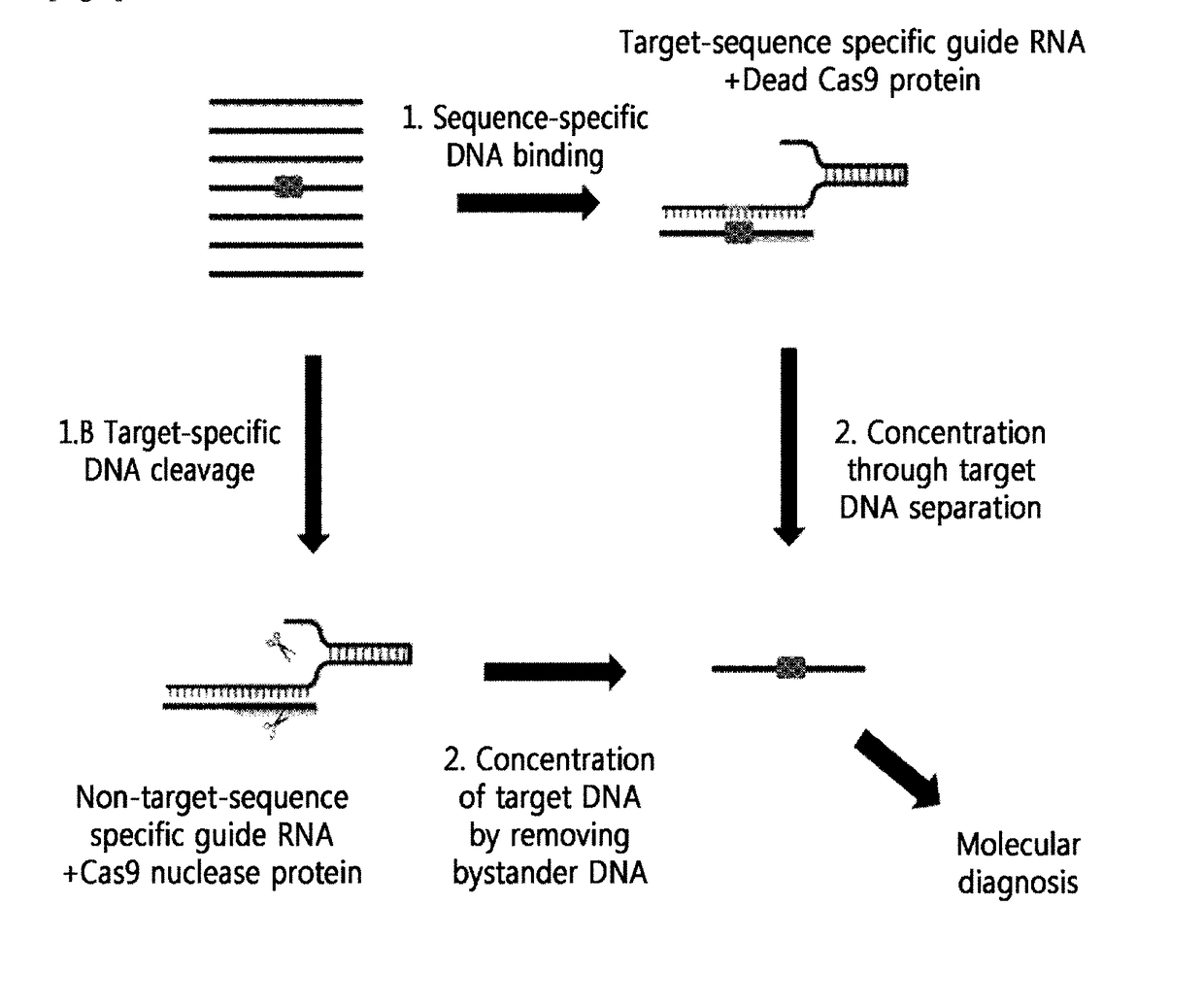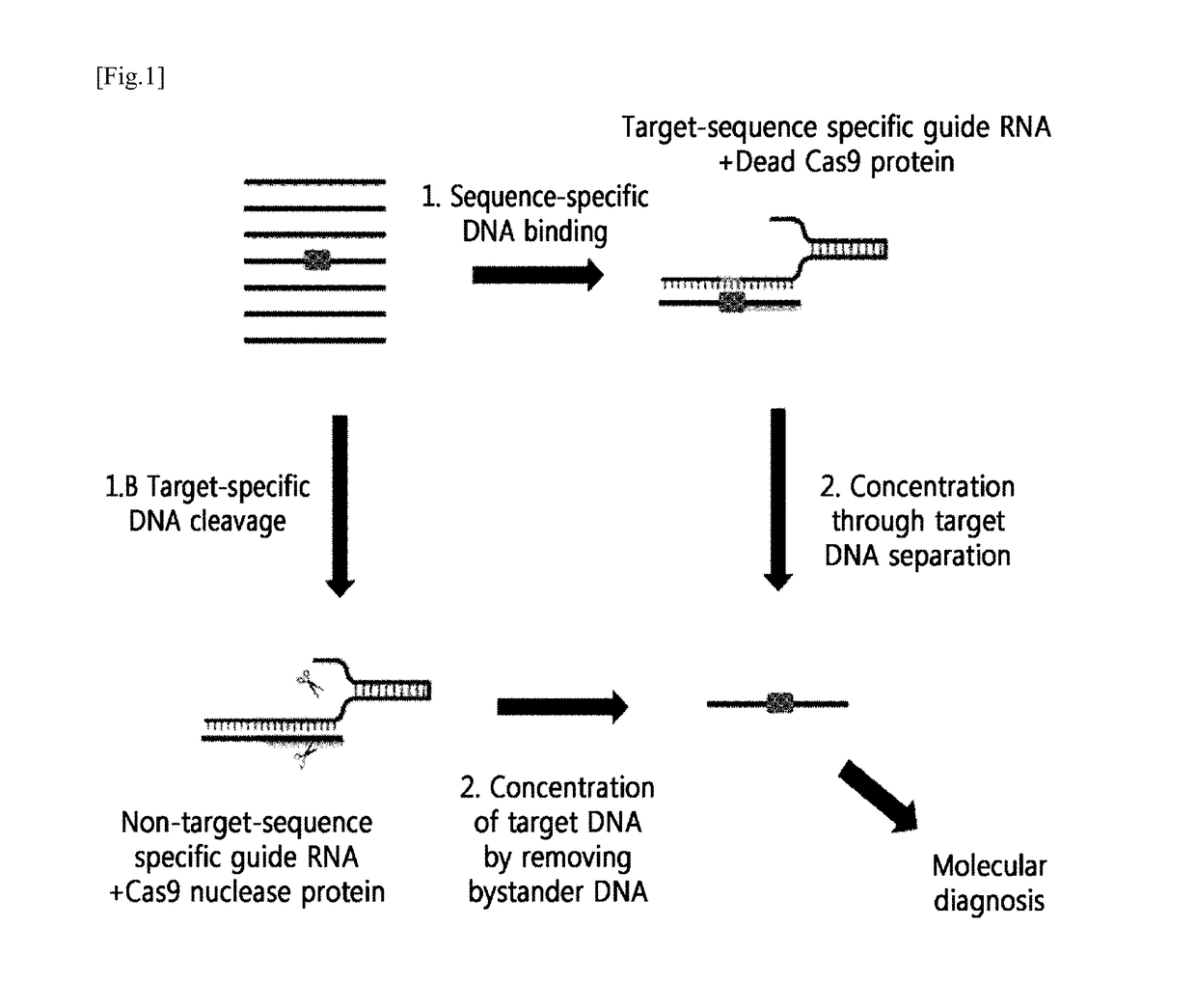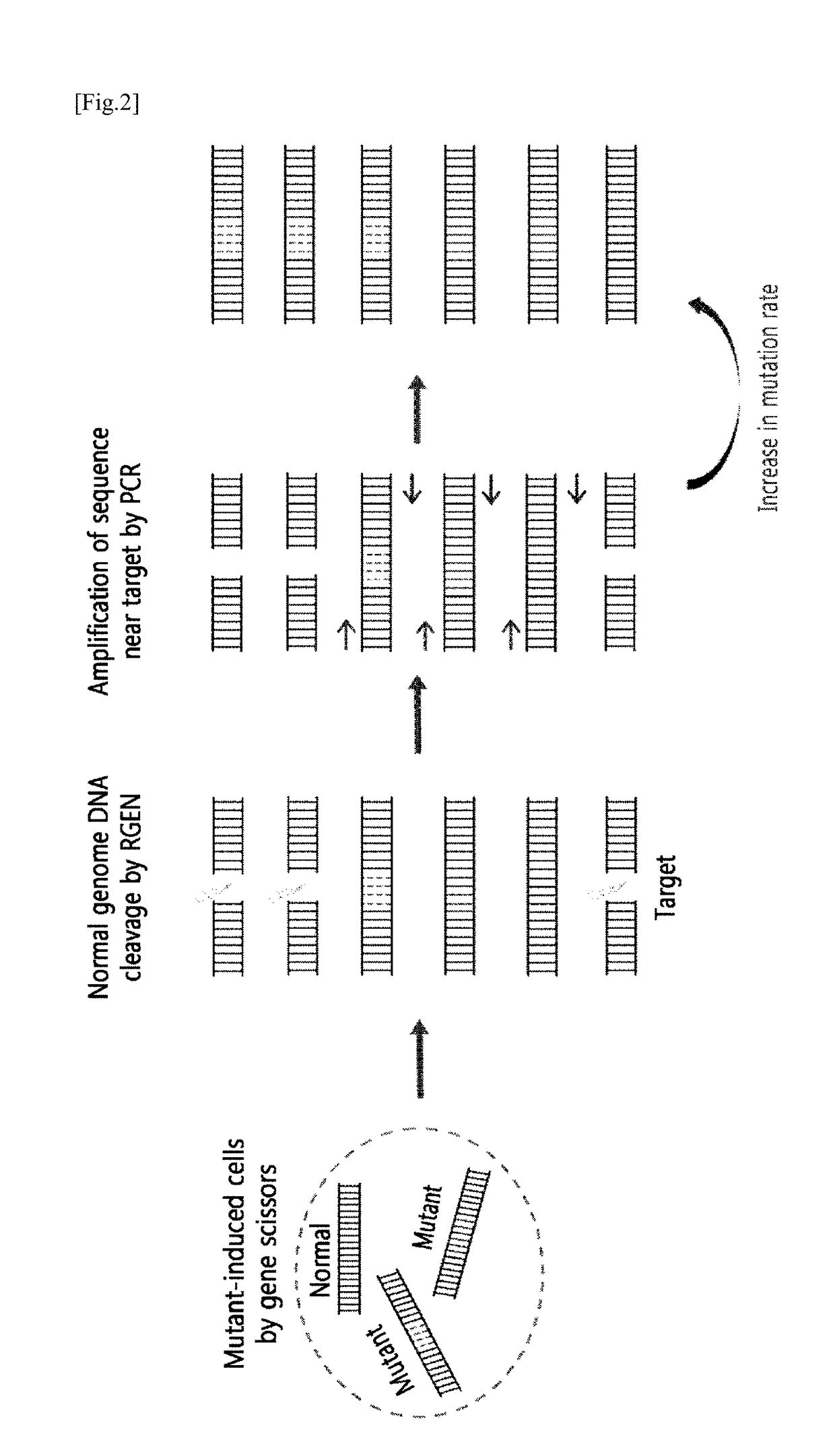Method for Sensitive Detection of Target DNA Using Target-Specific Nuclease
- Summary
- Abstract
- Description
- Claims
- Application Information
AI Technical Summary
Benefits of technology
Problems solved by technology
Method used
Image
Examples
example 1
ion of Concentration of Target DNA Using a Target-Specific Nuclease
[0114]In order to confirm whether or not it is possible to concentrate target DNA using a target-specific nuclease, concentration of the target DNA using an RNA-guided engineered nuclease (RGEN), which is a representative example of target-specific nucleases, was confirmed.
[0115]A schematic diagram thereof is shown in FIG. 1.
[0116]That is, as show in FIG. 1, it was confirmed that the genome containing the mutated DNA sequence (boxed portion) that is not normal DNA was subjected to the following two methods to concentrate target DNA.[0117]1) Method for Capturing Mutated DNA by Masking[0118]A method for concentrating by amplifying target DNA, by masking the mutated DNA for protection from random cleavage by a restriction enzyme, or by capturing the mutated DNA, using RGEN composed of a target-sequence-specific guide RNA (gRNA) and an inactivated Cas9 nuclease protein (a dead Cas9 protein or an inactivated Cas9 protein)...
example 2
on of a Very Small Amount of Mutation Induced by Gene Scissors
[0121]When the mutation rate induced by RGEN at intracellular targets or similar sequences of the target is very low, the process of increasing the ratio of mutant DNA to normal DNA is necessary in order to make a detection. For this, after genomic DNA was separated from a cell treated with RGEN, only the normal genomic DNA was excised by treating with the RGEN, which recognizes only the normal sequence of the target, leaving the mutant genomic DNA (FIG. 2). Subsequently, by amplifying a sequence around the target by PCR, the ratio of a PCR product amplified from the non-excised mutant genomic DNA to a PCR product amplified from the excised normal genomic DNA get relatively increased.
[0122]Specifically, after inducing a mutation by treating a cell inside with RGEN, which cleaves the VEGFA gene, the genomic DNA of the cell was separated, and the normal DNA was excised using each RGEN corresponding to sequences similar to t...
example 3
ion of Diagnosis of Mutation Occurring at a High Frequency in Oncogenes
[0126]Common oncogenes have mutations, unlike normal DNA, which are wild type. Fragments having mutations of such oncogenes are difficult to observe because the fragments are mixed at a ratio of less than 1%, generally less than 0.01% to 0.1%, in a sample, and thus it is difficult to make an early diagnosis of cancer.
[0127]As a response, a method for determining whether or not it is possible to perform a mutation diagnosis of such oncogenes by applying the new paradigm of the present invention was shown in FIG. 4 as a schematic diagram.
[0128]That is, in order to confirm the superiority of the method of the new paradigm of the present invention for detecting the presence of the oncogene in which mutations in the blood plasma DNA of an examined patient were present, the restriction fragment length polymorphism (RFLP) and sequence analysis were performed using a control group (before concentration), in which normal ...
PUM
 Login to View More
Login to View More Abstract
Description
Claims
Application Information
 Login to View More
Login to View More - R&D
- Intellectual Property
- Life Sciences
- Materials
- Tech Scout
- Unparalleled Data Quality
- Higher Quality Content
- 60% Fewer Hallucinations
Browse by: Latest US Patents, China's latest patents, Technical Efficacy Thesaurus, Application Domain, Technology Topic, Popular Technical Reports.
© 2025 PatSnap. All rights reserved.Legal|Privacy policy|Modern Slavery Act Transparency Statement|Sitemap|About US| Contact US: help@patsnap.com



